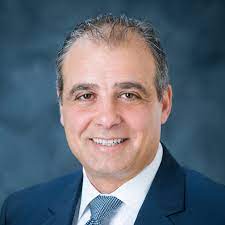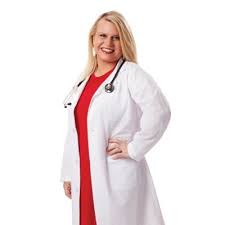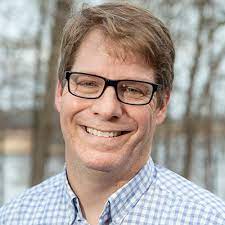Mississippi News LEXINGTON — Five Advanced Placement Physics students frantically wrote notes about a Yale University professor who spoke more than 1,200 miles from their rural high school. They opened their textbooks and watched the lecture on Newton’s Laws. Their teacher then gave them examples of how those laws were applied. After the lecture was over, they had another opportunity to learn: A video chat about physics with their Yale sophomore physics major. Experts believe that the unusual combination of virtual and in-person academics at a school that has never offered Advanced Placement (AP physics) is part of a larger experiment that could help to shape education in rural areas. This experiment will begin with high school students in the Mississippi Delta. It is one of the most rural and poorest parts of the country. Although it’s too early to determine how the pilot program that combines online and in-person learning will perform, one thing is certain: The free program does not provide the same benefits for students from Holmes County as those who live in more affluent places. “This is an once-in-a lifetime opportunity to give access and opportunity they might otherwise not have.” It has been difficult for many rural U.S. school districts to provide a rigorous precollege curriculum. A lack of teachers, declining enrollment numbers, and tight budgets make it difficult for them to offer electives and foreign languages, which are common in urban and suburban schools. Rural students are often less successful in college completion and attendance than their urban counterparts. According to a 2015 study, the absence of AP classes could increase the financial burden for college-bound rural students. Students who don’t take AP courses don’t get college credit that would allow them to graduate faster, and they are more likely to have to pay additional tuition when starting college. This is why the Global Teaching Project, a Washington D.C.-based education firm, has brought AP physics to Mississippi through its free program. Some years ago, Holmes County offered only one college-level AP course at its three high schools. The three schools merged during the 2014-15 school years, and the Holmes County Central High School now offers five classes. This includes AP calculus and English language. Holmes County, where half of the population lives below the poverty line, has adopted a national trend and uses online resources to offer its students more advanced high school courses. Betsy DeVos (the U.S. Secretary for Education) has called for this model. She claimed that virtual schools could offer “valuable alternatives”‘ in rural areas where educators are eager expand their courses. However, they won’t have the budget to do so or divert student funding from schools. Many rural areas have turned to online courses to expand college-level courses, fill in for those who don’t have the necessary teachers, or make the best use of what they do have. Some schools allow teachers to facilitate online classes for students, checking progress, and answering questions. Illinois launched an online AP pilot program earlier this year for 75 students in 10 rural high schools. Students in Maine can enroll in a state-funded online program. However, they must be accompanied by an adult mentor during the course. Colorado’s rural districts created video conference classrooms to allow students from one school to view courses being taught at a nearby school. However, experts caution against using virtual learning as an alternative to traditional in-person instruction. Poor outcomes have been reported for some of the more intensive virtual programs. Gary Miron, an education professor at Western Michigan University who specializes in evaluation, measurement and research, is concerned by the pace at which states are adopting online learning programs or making it a requirement for graduation. Miron stated that while we are advancing legislation regarding online learning quickly, it is still not sufficient evidence. It’s difficult to track online participation, but the Evergreen Education Group report, which is a leader in digital education research, estimates that approximately 2.7 million students took 4.5 million courses online in 2014-15. This is a significant increase over the 2002-03 school years, when 317,000 students took online courses, according to U.S. Department of Education. Online courses are required in at least five states. Many schools turning to online learning discover a growing variety of programs, each with different levels of depth and breadth. Some students choose to take individual units or lessons in classrooms that allow them to move at their own pace with a teacher as a facilitator. Related: Do we need to hit the pause key for blended and online learning? Schools have the option to choose programs from colleges and universities that offer lessons in AP subjects. These lessons are not intended to be a learning experience but can be used as supplemental teaching. K12.com offers online Advanced Placement courses. K12.com states that the courses follow the College Board’s curriculum. Some high school students also enroll in virtual schools, which can be run by state, nonprofits, universities or private companies. There are many variables in quality. Some states have adopted full-time virtual schools. In Pennsylvania, more than 30,000 students are enrolled at virtual charter schools with a graduation rate only 48 percent. Online education providers have been subject to lawsuits and shutdowns across the country for misleading students and failing provide education. Many companies created “online high schools,” which turned out to be nothing more than diploma mills in 2017. In a settlement with the Federal Trade Commission, the businesses were banned from operating after they were charged with violating federal trade laws. According to a 2016 National Education Policy Center report, while online school outcomes are not as good as traditional public schools, enrollment in full-time online learning schools is on the rise. Report authors called for greater oversight of blended and virtual learning schools and asked policymakers to slow down or stop their growth while more research is done. Rural school advocates like Robert Mahaffey (executive director of Rural School and Community Trust) have suggested other possible solutions to improving access to education. He proposed expanding courses in rural schools and offering more opportunities for teachers to earn certifications and credentials. Mahaffey stated that they don’t want “to lower the bar” or to reduce the content. He said that teachers need to be able to communicate content without being restricted by certain credentials. “How can we create professional pathways to help teachers get those certifications?” Miron from Western Michigan likes the idea of high school students collaborating to share teachers or technology. This allows them to take classes and then participate in virtual classes at another school. Miron stated that while it is more affordable than hiring full-time teachers for each school, offering an online course is still feasible. However, Miron believes that finding a way to provide online courses while keeping the “ownership of curriculum and instruction local,” is a great idea. Schools can have some control over online learning programs. This is especially important if other providers are being paid for them. Related: Rural schools use online resources to help students with mental health issues Miron is skeptical that students in high school and younger can manage their learning in the same way as online programs. Miron stated that it is unrealistic to assume these students will be able to master the curriculum by themselves. While programs may have amazing technology, we believe that students at primary and secondary school level don’t have the metacognitive skills necessary to master online instruction. Schools can’t know until it’s too late if a student has dropped out or is struggling to perform well. Miron stated that this is particularly true for online programs with large enrollments. For example, the 2012 investigation of the Florida Center for Investigative reporting and StateImpact Florida found that student-teacher ratios at K12.com, an online school, were as high at 275 students per teacher. K12.com provided schools with a lower student-to-teacher ratio in exchange for a per-student additional fee. The maximum ratio of brick-and-mortar schools to teachers in Mississippi was 25 students per teacher at the time the report was done. Why Mississippi? Mississippi has been behind the national average in high-speed internet access. Some districts have gathered funds to purchase laptops and other technology that will assist students. This allows teachers to design classes using technology. Students can also access a free online school that offers up to two units per year. However, enrollment is limited. The program is full, and there are no state-funded courses available. Matthew Dolan, chief executive officer of the Global Teaching Project, stated that the program was chosen to be piloted in Mississippi’s 10 low-income high school students. The state is rural and lacks certified teachers. Dolan, an attorney based in Washington, hopes that the project will be a solution to rural schools across the country who want the best of both online and brick-and mortar education. He believes the project will provide the best of both worlds, with high-quality teachers, student support and resources as well as small classes and human interaction. He stated that he wanted to find a solution to the problem of the vast majority rural schools, which he explained was not equipped to do so. Dolan, who was familiar with several Mississippi legislators during his time in Washington, knew that Mississippi allowed “consortiums”, which are groups of schools and organizations to come together and create innovative programs. The Global Teaching Project created the Mississippi Public School Consortium to Educational Access in 2017 thanks to the benefits offered by this vehicle. Dolan also used connections from Yale and Virginia to find tutors for his non-profit consortium. The funding came partly from the Jack Kent Cooke Foundation, which is also one of the funders of the Hechinger Report. The Global Teaching Project features aspects of high-quality, successful online programs. Many of these programs were recommended by the International Association for K-12 Online Learning. (iNACOL) publishes standards for online learning programs. These standards include elements such as instructor-student and student–student interaction, frequent assessments, and content that aligns with state standards or AP classes. Bruce Friend, chief operational officer of iNACOL, stated that teacher-student interaction is a key aspect of any online course. Friend stated that he is not a fan online learning programs in which the teacher acts more like a tutor than a teacher. There’s a big difference between me being your instructor and me telling you to go through your online course. After watching Yale Professor Meg Urry’s screen at the front of his classroom, Iftikhar Azeem, a physics teacher, reviewed three Newton’s Laws together with his students. Azeem asked, “What happens if you drop something on to the floor?” One student replied, “It stops.” Azeem continued to insist. Another student replied, “Friction.” Azeem asked, “So, is this good or bad?” A student replied, “Because otherwise things just continue and don’t end!” The class continued with a variety of in-person and virtual activities. Azeem guided students through an experiment using eggs, cardboard rolls and cups of water. This was to show how potential energy transforms into kinetic energy. The students communicated with their Yale tutor through video chat. Later, students took out their cell phones and sent answers to an online program in physics. Azeem’s students, along with a few students from other rural high schools, will be taking the AP physics test in May. Last year, 527 students took the Physics I exam in Mississippi, but only 175 of them passed. Mississippi’s Advanced Placement exam performance has been below the national average, even though it is home to 44 percent of Mississippi’s rural students. The average score for all AP exams in Mississippi was 2.2 in 2017, compared with 2.84 nationally. For college credit, a minimum score of 3 is acceptable by most schools. Mississippi launched an initiative in 2015-16 to increase participation on AP exams, particularly among students of low income and minorities. According to the state’s Department of Education, minority students saw a 37.9 percent increase in their participation on AP exams that year. Access to these courses is still a challenge. According to College Board data, many high schools in rural areas of the state only offer a handful of courses. Students have access to dozens of courses in many urban high schools that are more populated, wealthy, and urban. Madison Central High School outside of Jackson has 23 courses, while Oxford High School in Oxford, Mississippi, offers 16 AP classes. Students from Holmes County are enthusiastic about the program. The personalized video-conference tutoring by an undergraduate is a favorite feature. Jaylen Dennis (17), a student in electrical engineering, said that having a tutor makes things easier. Tamos Stevenson, his classmate and architect, also agreed. “He understands in real life why we’re learning it.” Senior Anna Martin, who plans to major in meteorology at college, does not mind watching videos of lectures. She said that if we don’t understand the video we have a teacher. Azeem is a certified teacher in physics who is knowledgeable but not certified to teach Advanced Placement. Azeem stated that the program offers students multiple options for help. They can get it online, in person or by text. Despite this, there are limitations due to the school’s rural location. Many students do not have access to the internet or computers at home. The school doesn’t have a physics laboratory. “We need equipment,” Azeem said. Dolan, Global Teaching Project, said that they are trying to create a model that is “scaleable easily” and will not cost any money for school districts. Related: Why one Mississippi district abandoned textbooks for l
aptops Currently, the project is funded through grants and donations to the consortium. Dolan hopes to eventually make a profit. Filming lectures and paying for post production have been the most costly aspects of the course. These costs range from $100,000 to $150,000. Students from Yale and Virginia are also paid to tutor students during the two-week program. The Global Teaching Project staff would love to see students pass the AP exams but they also want to help “build a community in rural Mississippi” that encourages students “revisit their notion of self and ambition for themselves.” They are currently speaking with other districts in the country to expand the program. Charles Lacy, principal of Holmes County Central High School said that the experience has taught students that it’s OK to be smart and hardworking. He believes online and distance learning are the future for providing more opportunities for students in areas such as Holmes which don’t have AP teachers. Lacy stated, “It is my hope that it is the pilot for the model in the future.” Superintendent Meeks stated that providing an excellent option for students to take Advanced Placement classes could make a big difference in schools across the country. Meeks stated that if it succeeds in Holmes County, it could be successful in other areas where children are poor and there is a shortage of resources. The Hechinger Report is a non-profit news organization that focuses on education innovation and inequality. Subscribe to our newsletter.










